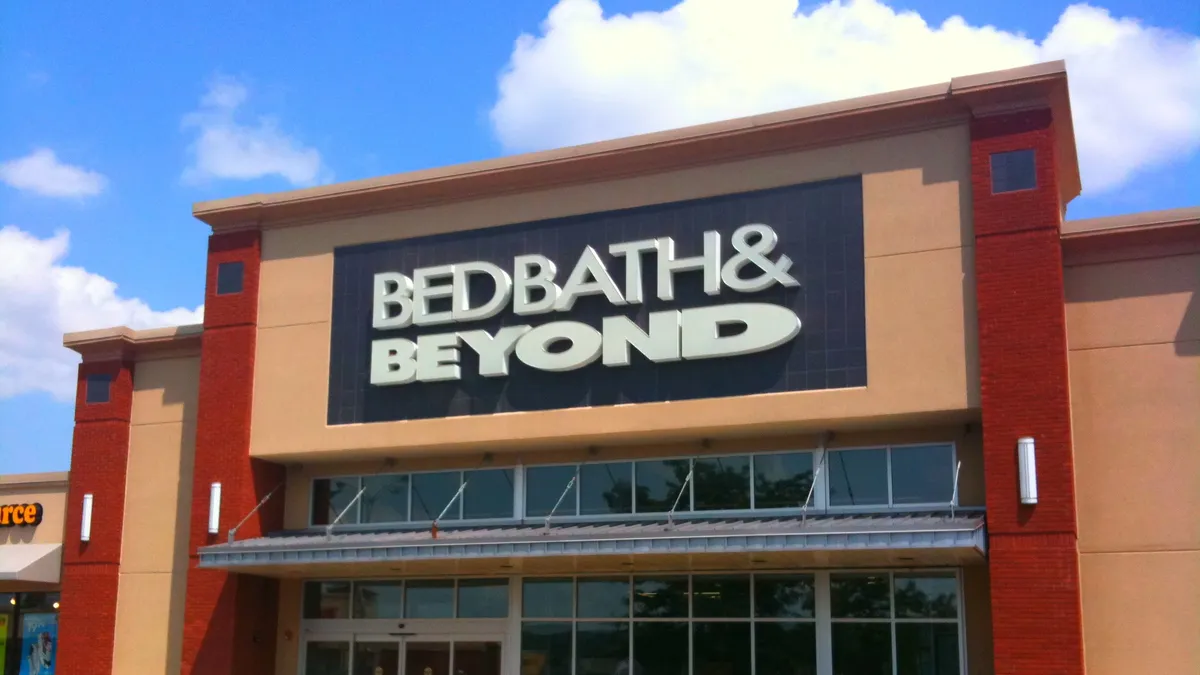Dive Brief:
- Overstock on Thursday announced it plans to "reimagine" its namesake brand by relaunching a new, stand-alone website that will offer what the brand was originally known for — a broad selection of closeout home merchandise at clearance prices.
- This comes after the company earlier this year relaunched its website as Bed Bath & Beyond following the acquisition of the brand and IP.
- CEO Jonathan Johnson said on an earnings call that the company aims to launch the new Overstock.com by the end of 2024 and “we will work with former, existing and new supplier partners to provide an outlet for clearance merchandise and deal-seeking consumers.”
Dive Insight:
The announcement to relaunch the Overstock website comes as the company reported mixed third-quarter results.
Overstock’s Q3 net revenue fell 19% from a year ago to $373 million, the company said Thursday in an earnings announcement. The e-commerce retailer reported an operating loss of $41 million, a net loss of $63 million and a gross profit of $70 million, which represents nearly 19% of total revenue.
The company also reported 4.9 million active customers, down 15% from last year. However, the number of active customers grew by 300,000 quarter over quarter, and Overstock said the number of orders delivered rose 3% from last year to 1.9 million. But the average order value fell 21% from last year to $192.
“While there were many things in the quarter that we felt good about, including the launch of the new Bed Bath & Beyond and the 6% growth in our active customer file, we fell short of our revenue goal,” Johnson said during the earnings call.
Johnson has led Overstock since 2019. This summer, he also led the acquisition and rebranding of the company to Bed Bath & Beyond. Johnson said that leveraging consumer loyalty and familiarity with the Bed Bath & Beyond brand is a key element of the company’s long-term growth strategy.
Johnson also said the company is still in the early stages of capitalizing on its recent acquisition. The company in late June paid $21.5 million to acquire the brand and IP. With that move, Johnson said the company gained one of the five most recognizable brands in the home retail sector. Overstock, by comparison, was 25th in name recognition.
The company, which said Tuesday it’s changing its corporate name to Beyond, estimates the acquisition will cost about $175 million overall, including investments of about $150 million to launch the brand, re-ignite the customer file, and create new categories all while maintaining core customers.
“Just a few years ago, when we first considered acquiring the Bed Bath & Beyond business, it would have cost us close to $2 billion,” Johnson said. “We chose not to pursue a deal at the time and subsequently watched and continued to monitor as it struggled with declining same-store sales and overwhelming debt.”
The deal gave the combined company a 100 million-person customer file and expanded vendor relationships. “Growing our customer file is critical to our long-term vision and is the primary metric we’re using to measure the initial success of this acquisition,” Johnson said.
Overstock’s biggest issue post-acquisition is customer erosion, Neil Saunders, managing director of GlobalData, said in emailed comments. Saunders said two issues are at play. First, core customers continue to reduce spending on home-related purchases and it appears “that Overstock is losing out on their share of wallet to a greater extent than rivals,” Saunders said. Second, the Overstock brand continues to fall off consumers’ radars.
While Overstock deserves more time to show that the rebranding is working, “the initial results are not impressive,” Saunders said. “The worrying thing here is that the rebrand to Bed Bath & Beyond was supposed to help remedy this issue but, so far, does not seem to have done so.”
Looking ahead, CFO Adrianne Lee said the company expects revenue to improve modestly in Q4 versus the current Q3 year-over-year decline. Gross margin for Q4 is likely to be lower due to elevated holiday promotional activity. Lee also said the company anticipates active customers to increase to around 5.2 million, offset by lower average order volume.













